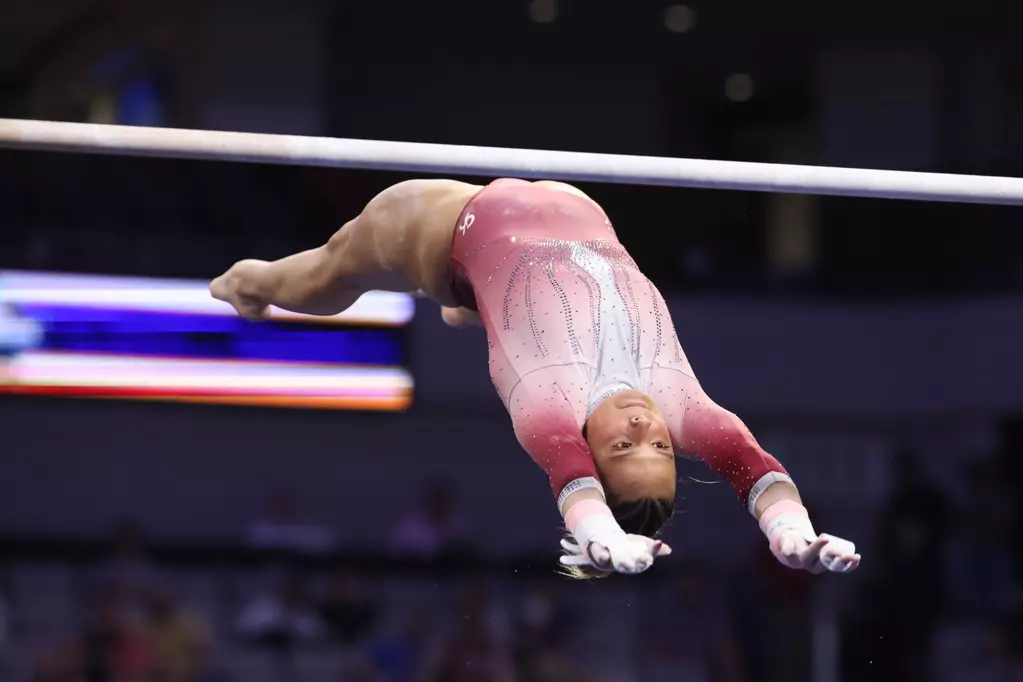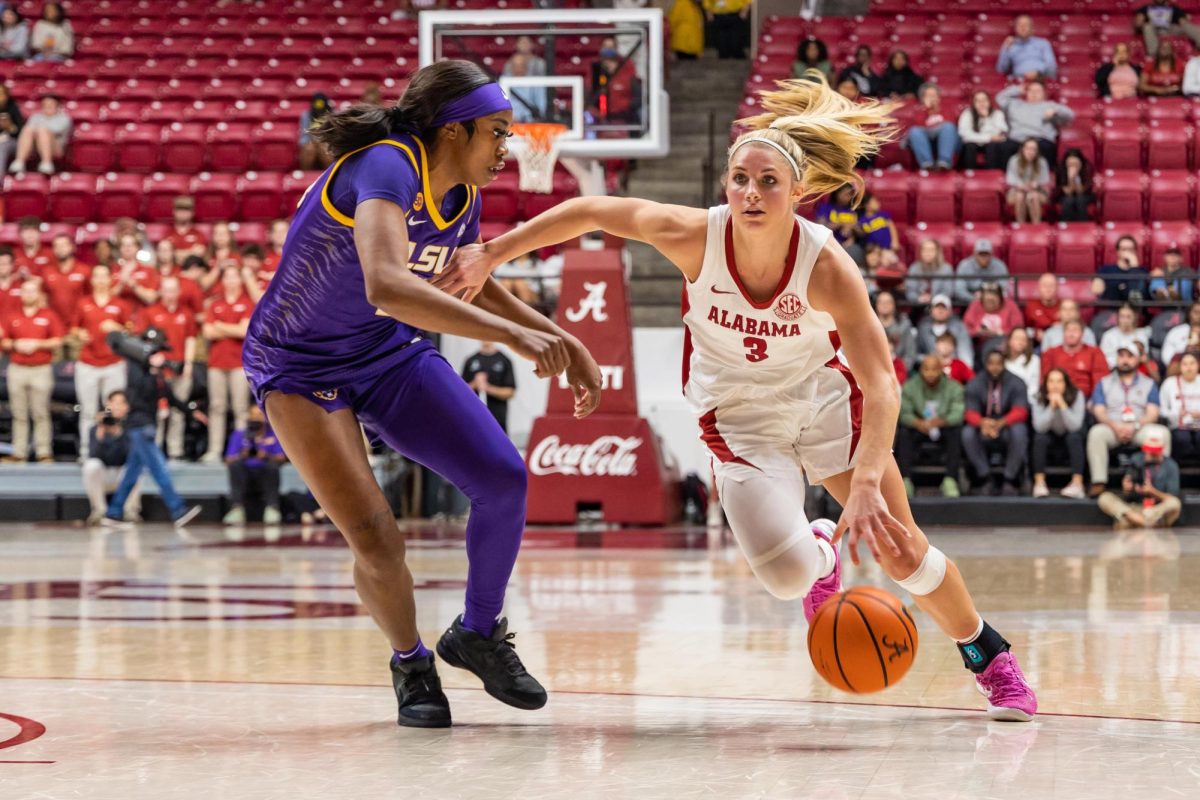The Alabama men’s basketball team showed flashes of brilliance and looked completely inept during stretches of the 2012-2013 season.
The season began with a 6-0 start that included winning the 2K Sports Classic with a 22-point rout of Villanova, who is considered an NCAA tournament team. The Tide’s resume also includes wins over Tennessee and Kentucky, who are both considered to be on the NCAA tournament bubble. With the bright spots come a losing stretch in December and the inexplicable loss at Auburn, though.
“From the beginning of the year to this point, there are moments – times in games – when you have a lead or on the road in a close game, and there’s a moment of truth where you have to go and make plays,” head coach Anthony Grant said after Alabama’s victory over Georgia on Saturday. “We have to get more guys to embrace that moment.”
ESPN analyst Joe Lunardi currently has Alabama as one of the “next four out,” meaning the Tide has a slim chance to make the big dance.
“Nothing about their resume says ‘we belong,’” ESPN college basketball analyst Jimmy Dykes said during a phone interview. “It doesn’t say we shouldn’t be considered, but it doesn’t jump out at you.”
Now, the task for Alabama (20-11, 12-6 SEC) is to advance deep into the SEC tournament and potentially win it if the Tide hopes to hear its name called on Selection Sunday, March 17.
“I think Anthony has gotten the most out of his guys, but unfortunately he’s in a battle right now, trying to sneak in that thing,” Dykes said.
Bad losses
Following a last-second, 58-56 loss to then-No. 17 Cincinnati on Dec. 1, Alabama began a month-long skid.
The Tide stumbled to a 1-5 record in the final month of 2012, including home losses to Mercer and Tulane. The team’s only win came on the road against a struggling Texas Tech squad. But the month started off with more than just a tough road loss to a Big East foe.
Center Carl Engstrom went down just three minutes into the Cincinnati game with what doctors later determined was a torn anterior cruciate ligament and medial collateral ligament in his left knee.
“Engstrom was a bigger loss than we all thought,” Dykes said. “He was trending toward being an 8 or 9 points and 5 rebounds type of guy before he got hurt. Those are numbers Alabama couldn’t make up, plus he’s a 7-footer, so he would have been responsible for taking points away from the other team.”
The Tide’s lone senior, Andrew Steele, was also battling a sports hernia and other nagging injuries. Overlooked during Alabama’s struggles was the fact that many of the team’s healthy contributors, outside of Releford, were second-year players.
“Alabama hit a rough stretch, and some of the team’s youth showed,” said Bryan Passink, Alabama basketball analyst for the Crimson Tide Sports Network.
Passink saw every dribble of the season and said Alabama managed to respond to adversity despite its youth across the board.
While it came later in the year, Alabama’s 49-37 loss at Auburn on Feb. 6 has lasting effects. Alabama scored at least 50 points in every game except the match up in Auburn Arena.
The team shot 28.6 percent (14-49) from the floor, 10.5 percent (2-19) from the three-point line and allowed Auburn to score 36 points in the second half while only scoring 14.
One loss doesn’t define a season, but this one comes close as the Tigers finished 14th in the SEC with just three conference wins.
Grant publicly questioned the team’s effort following the loss.
“I told the guys that we all need to look at ourselves in the mirror because this game was completely on us in terms of the energy we need to play with in a game that meant as much as this one meant,” Grant said.
Pressure on the Trevors
Guards Trevor Releford and Trevor Lacey led the team in scoring in all but nine of their 31 contests.
Releford averaged 15.6 points per game, shot nearly 50 percent from the floor, 44 percent from beyond the arc and made more than 80 percent from the free-throw line.
Lacey started every game and averaged 11 points per game and was third the on team in rebounds at 4 per game from the guard position.
Rodney Cooper was the next man up with 10.7 points per game in non-conference play, but his scoring dipped a little in SEC play to 9.6 points per game. Cooper led the team in rebounds at a little under 5 per game.
With Alabama starting four perimeter players, Moussa Gueye and Nick Jacobs were the Tide’s only inside threats once Engstrom went down.
Gueye averaged a mere 1.4 points and nearly 4 rebounds per game. Gueye served as the defense piece to Jacobs’ offensive skill set. Jacobs averaged 7.5 points per game out of conference, and as his minutes increased, he gave the Tide 9.3 points per game during SEC play, but only 4.2 rebounds.
“What they don’t have is a consistent scorer in the low post, and that’s why you see the scoring droughts,” Passink said. “There have been other breakdowns, but when you look at teams that are really good and consistent on the offensive end, they have balance. They have a guy on the inside that can get you double figures every night.”
Alabama’s lack of depth didn’t help the cause. Alabama lost four scholarship players from last season (JaMychal Green, Tony Mitchell, Charles Hankerson and Ben Eblen), but only brought in one player (Devonta Pollard). So when Engstrom went down and Steele got banged up, the Tide’s bench was thin.
“I think the major mistake they made this year was not filling those open scholarships,” said Dan Wolken, who covers college basketball for USA Today. “At the end of the day, it really limited their depth and made life a lot harder for the guys they have. It didn’t give them much margin for error.”
Passink pointed to another SEC team as an example of how this method of managing a roster has been used recently.
“A lot of teams around the country manage their rosters like that,” Passink said. “I look at Kentucky a year ago; they didn’t have a full roster and only played six or seven guys, but won a national championship. It can be done, and I don’t think that’s as big a deal as some people make it.”
Offensively, Alabama was mostly Releford and Lacey or bust. When those two struggled or when teams made a concerted effort to take them out of the game, Alabama’s offense looked out of sorts.
“Their scheme is fine,” Dykes said. “It boils down to personnel. Nick Jacobs has to work his tail off to get to double figures, and Moussa Gueye isn’t going to do it. So now the pressure is on Trevor Releford and Lacey to produce every night. Not just double figures. Those guys have to get 16-18 points. When other teams scout, they want to take those kids away, so there’s a lot on their shoulders.”
Wolken wouldn’t blame Grant, but mentioned the staff’s talent evaluation as a red flag.
“There’s nothing wrong with Anthony Grant as a basketball coach or as a guy in charge of the program. He’s a solid coach,” Wolken said. “You can certainly look at his recruiting and wonder if they’ve evaluated some guys properly or gotten the right guys, but it’s tough. Alabama is not one of the marquee basketball programs in the country.”
Wolken said ultimately, Alabama’s offensive struggles come down to personnel issues.
“The guards they have are good players, but they just don’t have a takeover guy who is equipped to go get buckets outside of the offense, someone who is able to improvise and make tough shots,” Wolken said. “That’s not who they are, and that makes it difficult for them to score.”
Win and you’re in
Despite losing three of its last five regular season games, Alabama managed to land a top-4 seed in the SEC tournament and earn a double bye.
There will be opportunities for Alabama to make its case as a tournament team with a possible matchup against Tennessee, who is currently ahead of Alabama on the bubble, and another potential battle with Florida, a top-15 team in the country.
Passink said the players shouldn’t leave it in the selection committee’s hands.
“If I’m a player, I look at it from the standpoint of if I want to be in the NCAA tournament, I need to go to Nashville and win the SEC tournament,” Passink said. “… If Alabama gets on a run and takes care of business, they have a great shot of getting into the NCAA tournament.”
For Wolken, the formula for Alabama to make the tournament is simple: win in Nashville.
“I think they have to win [the SEC tournament],” Wolken said. “I don’t really think they can get an at-large bid unless things break perfect for them. The problem is they didn’t get anything done in the league, partly because of the schedule and partly because of the way they played in certain games. The league was not very good this year, and they didn’t beat the quality teams in the league like Missouri and Florida.”
The Southeastern Conference tournament begins Wednesday and concludes with the championship game Sunday at noon on ABC.








